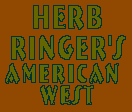 |
||||||
|
|
Somehow I thought this day would never come—I figured The Zephyr would outlast me, if only by a single breath. But it didn’t turn out that way. It is with a heavy heart and with great regret that I have to type these words--- barring the totally unexpected, the February/March 2009 issue of The Canyon Country Zephyr will be its last printed edition. This news will come as a sad shock to some of you and a delight and a relief to others. But after 20 years, trying to keep this paper in print is just about impossible. I do have a hope of keeping The Zephyr alive online and I will get to that in a bit. For the last two decades, this has been, in most respects, a one man show, with some notable exceptions. Over the years, I’ve been able to depend on some great people to help me with the distribution and subscriptions. And some excellent writers kept The Zephyr from becoming a 32 page Stiles Rant. But the business end of it was mine. And there’s the rub. In some ways, I guess I’m a pretty good businessman in that I kept this publication in the black, albeit barely, for all these years. I don’t know if I’m smart or just cheap, but I ran the Zephyr on a shoestring, cutting corners no one else would even think of. I never invested in business "infrastructure." Until last year, I assembled The Z the old cut and paste way, with a pair of scissors and a hand waxer. I never bought an office, did the layouts on my back porch, and since 1994, my "transportation fleet" has been an ‘86 GMC pickup. So by hook or crook, I kept it going. But Moab is not the same town that I knew and revered in 1989. And I am not the same man. Life and issues affecting the Colorado Plateau were very black-and-white to me then. As the Millennium approached, Moab became more than just a tourist mecca; it became something else altogether. The new "amenities economy" almost made me nostalgic for cows again. And though this New Urbanism/Enviropreneurism was eventually embraced and encouraged by mainstream environmentalists as a solution to the economic woes of the rural west, I became more troubled and conflicted. And I chose to speak openly and frankly about these conflicts, about the hypocrisy of my peers and my own contradictions. I take my job seriously, and have always believed that being honest and even-handed, regardless of the consequences, was essential to good journalism. And so for the last ten years, I have tried to inform my readers of the impacts the amenities economy can create, even when it put me at odds with my own friends and the very advertisers who keep this paper alive. Many of my advertisers have been with me for years, some for more than a decade, and a few since the beginning. To them I will always be grateful. But as they retire or sell their businesses, the ad base shrinks. Seldom do the new owners want to continue the Zephyr ads, and I cannot blame them. I speak my mind and I take my lumps. The Zephyr’s "message" is hardly the philosophy they dare embrace if they hope to assure their own survival. For New Moab and the amenities economy to flourish, it must continue to grow. Ed Abbey compared it to a cancer cell. In any case, New Moab is hardly in a position to support a publication like mine, just because they think an independent and sometimes cranky voice like The Zephyr needs to survive in our society. There aren’t many of us left. Instead, most businesses need to look at that bottom line. I only recently learned a new acronym—ROI. A newly acquired business stopped ads after 14 years and explained it to me. It means "Return On Investment." And I can see their point. So...what to do? Trying to rejuvenate the Moab base seems pointless. Broadening the base into other parts of the West might work, if I had the time, resources and energy to try. I know there are many fellow Westerners who share my worries and fears. They are the kindred spirits that have sustained me for so long. But I’ve done this paper alone for two decades and I just don’t have the strength to start over again in such a way. I do hold out one hope for The Zephyr’s survival, on some level, and it is an odd one, considering my anachronistic ways. I was, after all, one of the last newspapers in Utah to give up cutting and pasting the layout boards with scissors and glue and embrace computer technology. But I think an online version of The Zephyr is feasible and I hope to give it a try. The web site would change dramatically. Instead of the selected stories now available, you’d see The Zephyr exactly as it looks in the print edition, with the same two page spreads, the same graphics and cartoons. But it wouldn’t be on paper. And in that regard, I can’t help feel relieved that I’d be saving about a ton and a half of trees each issue and hundreds of gallons of gasoline to distribute it. Still I love the feel of a Zephyr in my hands. It’s actually painful to think about it. The challenge for me is to build an online readership that allows The Zephyr to continue as an intelligent, even-handed, sometimes sentimental, frequently annoying, and often irreverent source of information, humor, history and personal reflection on these strange and scary early years of the 21st Century. So...that’s the story. Twenty years is a long time for anything to survive. I treasure every moment of it, even the ones that were the darkest. I thank all of you for your kindness, your support, and even your criticisms. What I hoped for, from the beginning, was to create an opportunity for conversation with all of you who love the West, whether you agreed with me or not. I hope, on some level, I succeeded..........Jim Stiles |
|||||






